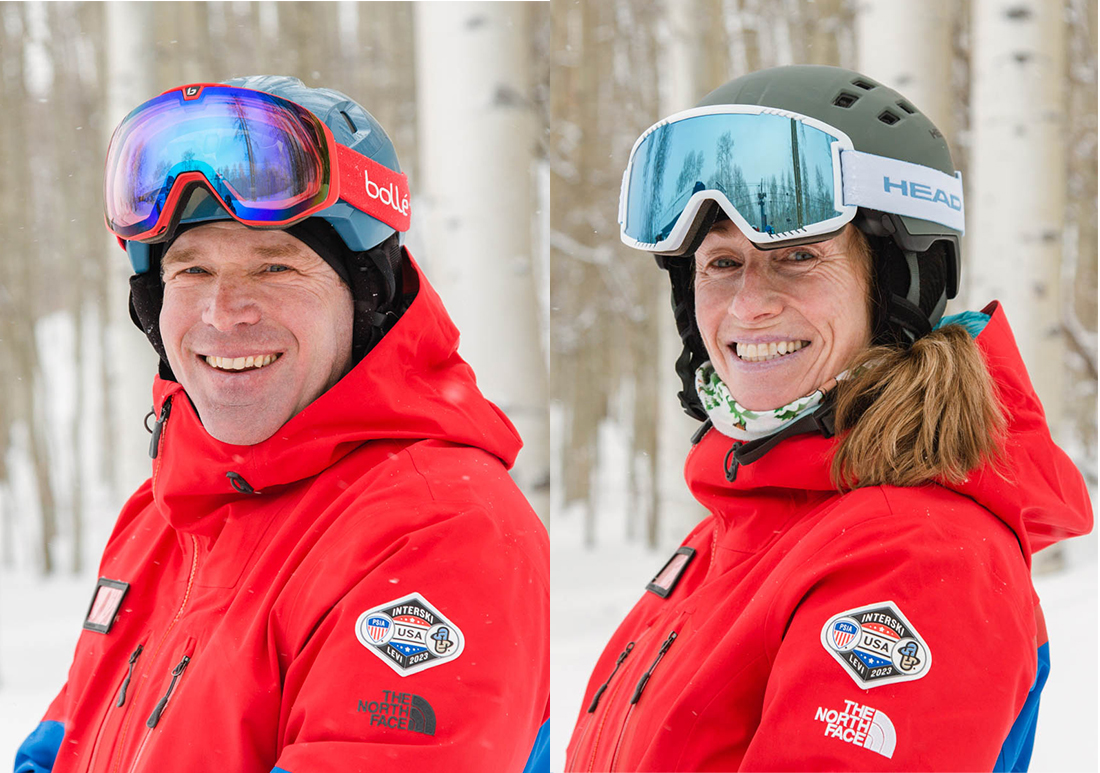Interski 2023: Top Takeaways from Poland and Switzerland
Held every four years, Interski brings instructors together from around the world. The event offers a valuable educational opportunity for snowsports educators to share their innovations and core beliefs. It gives PSIA-AASI, through its national team, a chance to compare the American Teaching System with the educational approaches of other countries and bring home ideas that help PSIA-AASI members improve and evolve.
Here, PSIA Alpine Team members Mike Hafer and Robin Barnes share their takeaways from the individual presentations they attended from Poland and Switzerland.
Mike Hafer
Poland’s clinic focused on how to use very simple tools to:
- Enhance body performance.
- Create kinesthetic awareness.
- Create awareness around the kinetic chain from the ground up.
The Polish team demonstrated tasks that used a Theraband resistance band to create greater opposing forces to heighten each attendee’s awareness of muscular efforts. The demonstration took us through various tasks at different skill levels and movement patterns. The Theraband work focused on upper-level skills while using equipment that is easy to obtain and could be carried around in your jacket pocket.
In my opinion, anytime you can enhance kinesthetic awareness in a sport that depends on receiving feedback to achieve higher levels, it’s a win. It can give an instructor a creative way to coach someone into developing their internal sensations rapidly, compared to other drills that we use. For instructors, it is also a progression that can help develop their own understanding of body performance relative to external forces.
Robin Barnes
Switzerland’s technical message was about:
- Early weight transfer with an extension of the new outside leg.
- Moving the center of gravity forward and down the hill.
- Counter rotation (which, in the U.S., we would call counter or upper/lower body separation.
Switzerland divides their turn into three parts: Initiation, Steering Phase 1, and Steering Phase 2. They don’t specifically talk about the finish of a turn, as that is considered part of Steering Phase 2 – from the middle of the turn through the end of the turn. I very much like their approach of not referring to the finish of a turn. The initiation is at the edge change into the fall line during phase 2, which, to me, is better than referring to the “finish” of a turn.
Switzerland believes that movements taught to beginners should be similar to movements taught in upper levels of skiing, which is similar to what we believe the United States. There was a lot of discussion about extending the new outside leg to initiate a turn. In the U.S., there are certainly a lot of applications of that in our skiing.







